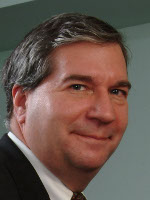As the nano-knowledge base expands crowd-source thinking makes it clear that connecting more resource partners is the key.
The quest for knowledge across so many audiences shows that nanotechnology is in the rushing, roaring mainstream of our thinking. And I believe that’s the beginning of feedback loop in which answers come from everywhere and all kinds of people -- a crowd-sourcing process, as innovation gurus call it.

The impetus? A webinar by the National Nanotechnology Coordination Office, sharing plans for and soliciting views about a redesign for the National Nanotechnology Initiative website, www.nano.gov. Don’t roll your eyes. This wasn’t about color palettes or typefaces. The crux of the discussion was fundamental: who wants to know what about nanotechnology?
The explosive answer: everyone wants to know more of everything. Scientists and congressmen. Third graders and PhD candidates. Environmental health specialists and their employees on the assembly line. News reporters and job seekers. Start-up funders and ordinary consumers.
And that’s the aha-moment. The quest for knowledge across so many audiences shows that nanotechnology is in the rushing, roaring mainstream of our thinking. And I believe that’s the beginning of feedback loop in which answers come from everywhere and all kinds of people -- a crowd-sourcing process, as innovation gurus call it.
Today, we’re creating a community where researchers can hear consumer voices. Funders and manufacturers can view markets more clearly. EHS professionals can see the big picture on concerns and educators can find a road map for classrooms.
Oh, we’re not there yet. But let me share five fundamental shifts I took away from the nano.gov webinar that suggest we’re well on our way.
Five Shifts Toward Mainstream Nanotechnology
- When Disney embraces nanotech, you’re at the happiest nano-place on earth. Did you know there are long-term nanotechnology exhibits at both Disneyland and Disney World? What does that say about the mainstreaming of nano? Sidebar: the Cornell nanotechnologist who helped design those exhibits is consulting on nano.gov.)
- Everything I know about nanotechnology, I learned in kindergarten. Well, at least that’s where nano-literacy begins now. Educational material is a top-requested resource -- and not just at the college level anymore. K-12 teachers, students and parents are immersing themselves. Businesses are gathering workforce development materials, too.
- Together, we’re talking environmental common sense, not scare tactics. That message was simple and clear from a panelist speaking for the American Industrial Hygiene Association’s 10,000 health scientists and practitioners. Occupational health scientists seek sound primary research that helps them represent and protect workers, plus vetted secondary resources that can be passed on to educate them. No panic, no mania, just knowledge to move forward confidently.
- We’re ganging up on innovation. The nano.gov site has been a collaboration exchange -- commercialization, funding, research, international connections, even research sites. Users want even more -- 2-way communications right on the site, or maybe working groups tackling solutions together. And did you know the NNI is on Twitter?
- There’s no place for know-it-alls. The nano-knowledge base is expanding exponentially. No one site, agency, or organization can be master of it all. Crowd-source thinking makes it clear that connecting more resource partners is the key. Audiences want access to more-more-more data, and they’ll crank up a search engine to reach conclusion.
The most current U.S. census count tells us there are 311,591,117 minds at work in this country. That crowd is a source of insight that makes each of us better.
Spend some time at nano.gov. See how you can connect to other minds there. Make suggestions for the new version. And, most important, think hard about what the potential of crowd-source thinking can mean to your own organization.
Scott E. Rickert is chief executive of Nanofilm, Ltd., located in Valley View, Ohio.
Source: Industry Week
